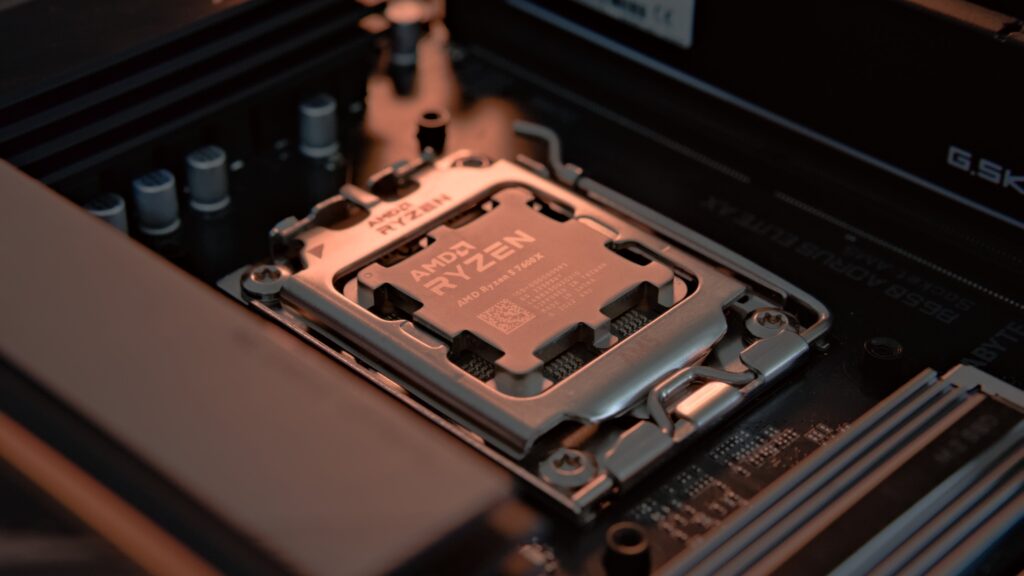Keeping your CPU at the right temperature is crucial for performance and longevity. But how hot is too hot for a CPU?
A CPU is too hot when it exceeds 85-90°C under load, as this can cause throttling, crashes, or damage. Ideal temperatures are below 80°C for gaming and under 50°C when idle. Proper cooling, like fans and thermal paste, helps maintain safe CPU temps.
If you’ve ever worried about overheating, throttling, or even permanent damage, this guide will help you understand CPU temperatures, safe ranges, and ways to keep your processor cool.
What Is CPU Temperature?
A CPU’s temperature refers to the amount of heat it generates while running. CPUs perform billions of calculations per second, producing heat as a byproduct. If this heat isn’t managed properly, it can lead to performance issues or even permanent damage.
Normal CPU Temperature Ranges!
CPU temperature changes depending on what tasks your computer is performing. When the computer is on but not running demanding programs, the CPU stays cooler. In this idle state, the temperature usually stays between 30°C and 50°C. This range is normal and safe. However, when the computer is under heavy use, such as during video editing, rendering, or other intensive tasks, the CPU gets hotter. In these situations, the temperature can rise to between 60°C and 85°C. If the temperature goes beyond this, it might indicate a problem, such as poor cooling or dust buildup inside the computer. Keeping an eye on the CPU temperature is important to ensure smooth performance and prevent damage.

Certain activities put even more strain on the CPU, causing it to heat up even more. Gaming and overclocking, for example, push the processor harder, making it work at higher speeds. Under these conditions, CPU temperatures can rise to between 70°C and 95°C. If the temperature goes beyond 100°C, it can become a serious issue. When this happens, better cooling solutions, such as improved fans, liquid cooling, or better airflow, may be necessary to keep the computer from overheating. Maintaining proper cooling is crucial to prevent performance issues and ensure the CPU runs efficiently for a long time.
How Hot Is Too Hot for a CPU?
1. Maximum Safe Temperatures by CPU Type:
- Intel CPUs: Most Intel processors have a max safe temperature of 100°C before throttling.
- AMD CPUs: Generally, AMD CPUs operate safely up to 95°C.
2. What Happens When a CPU Gets Too Hot?
- Thermal Throttling: The CPU slows down to reduce heat.
- Shutdown: The system shuts off to prevent damage.
- Permanent Damage: Long-term overheating can degrade components.
How to Monitor CPU Temperature?
Monitoring your CPU temperature is essential to prevent overheating and performance issues. You can use built-in BIOS settings or third-party software like HWMonitor, Core Temp, or MSI Afterburner to track real-time temperatures. These tools help identify temperature spikes and allow you to take action before your CPU reaches dangerous levels. Keeping an eye on temperature readings while gaming, rendering, or running heavy applications ensures that your system operates within safe limits.
Safe and Dangerous CPU Temperature Ranges!
Keeping your CPU within safe temperature limits is crucial for performance and longevity. Below is a table outlining ideal and dangerous temperature ranges for different usage scenarios.
| CPU State | Safe Temperature Range | Dangerous Temperature |
| Idle | 30°C – 50°C | Above 55°C |
| Light Tasks | 40°C – 65°C | Above 70°C |
| Gaming/Load | 60°C – 80°C | Above 85°C |
| Overclocking | 70°C – 85°C | Above 90°C |
| Critical Zone | N/A | Above 100°C (Risk of damage) |
Regularly monitoring your CPU temperature and ensuring proper cooling can help maintain performance and prevent hardware failure.
Factors That Affect CPU Temperature!
1. Cooling System Efficiency:
Air coolers and liquid coolers help regulate CPU temperatures. The better the cooler, the lower the temperature.
2. Ambient Room Temperature:
A hot room makes cooling harder. Keeping your PC in a cool environment helps.
3. Thermal Paste and Its Role:
Proper thermal paste application improves heat transfer between the CPU and cooler.
4. Dust and Ventilation Issues:
A dusty PC traps heat. Clean your system regularly to ensure proper airflow.
Best Cooling Solutions for a Hot CPU!
If your CPU runs too hot, investing in proper cooling solutions is crucial. Air coolers with high-quality heat sinks and powerful fans can effectively dissipate heat. Liquid cooling systems offer even better temperature control, especially for overclocked processors. Applying high-quality thermal paste ensures better heat transfer between the CPU and the cooler. Additionally, optimizing airflow in your PC case by using well-placed intake and exhaust fans can prevent heat buildup and maintain lower CPU temperatures.
How to Monitor CPU Temperature?
- Use Built-in BIOS Tools: Many motherboards have a built-in BIOS feature that allows you to check CPU temperature.
- Restart and Access BIOS: Restart your computer and enter BIOS by pressing the designated key (usually F2, F10, Delete, or Esc).
- Locate Temperature Settings: In BIOS, look for sections like Hardware Monitor, PC Health Status, or H/W Monitor to find CPU temperature readings.
- Use Third-Party Software: Install CPU monitoring programs like HWMonitor, Core Temp, or MSI Afterburner for real-time temperature tracking.
- Download from Official Sources: Always download monitoring software from the official website to ensure security and accuracy.
- Monitor Temperature Regularly: Keep an eye on CPU temperature while gaming, video editing, or performing intensive tasks.
- Check for Overheating: If temperatures are too high (above 80-90°C), clean your PC, improve cooling, or reapply thermal paste.
Overclocking and Its Impact on CPU Temperature!
Overclocking makes your computer work faster, but it also makes it produce more heat. If too much heat builds up, it can cause damage to the parts inside your computer. To keep things cool, you should upgrade your cooling system. One way to do this is by using a better CPU cooler, such as a larger air cooler or a liquid cooling system. These cooling options help remove heat more effectively. Another important step is improving the airflow inside your computer case. You can do this by adding more fans or making sure the fans are placed correctly to push hot air out and bring cool air in. A clean and dust-free system also helps prevent overheating, so you should regularly clean the inside of your computer to make sure dust doesn’t block airflow.

Using good quality thermal paste is another way to manage heat when overclocking. Thermal paste is a special material applied between the CPU and its cooler to improve heat transfer. A high-quality thermal paste can help lower temperatures and prevent overheating. Along with this, it is important to monitor your computer’s temperature frequently. You can use software tools to check the temperature of your CPU and GPU while running heavy tasks. If the temperature gets too high, you may need to lower your overclocking settings to avoid damage. By taking these steps, you can safely overclock your computer while keeping it cool and running smoothly.
Best Practices to Keep CPU Temperature Low!
1. Proper Cooling Solutions:
Invest in high-quality air or liquid cooling for better temperature management.
2. Cleaning and Maintenance:
Dust buildup can overheat your CPU. Regular cleaning prevents this.
3. Adjusting Fan Speeds and Airflow:
Adjusting fan curves in BIOS or using software can improve cooling efficiency.
FAQs:
1. What is the ideal CPU temperature when gaming?
Between 70°C and 85°C is normal.
2. Can a high CPU temperature damage my PC?
Yes, overheating can cause throttling, shutdowns, or long-term damage.
3. What happens if my CPU gets too hot?
It may slow down, crash, or even sustain permanent damage.
4. How can I check my CPU temperature?
Use BIOS tools or software like HWMonitor.
5. What is the best cooling solution for a high-performance CPU?
Liquid cooling or high-end air coolers are the best options.
Conclusion:
Maintaining the right CPU temperature ensures your processor runs efficiently and lasts longer. Keeping your CPU under 85°C is ideal, while above 100°C is dangerous. Proper cooling, ventilation, and monitoring help prevent overheating issues.
Also Read:
- How To Slow My Cpu Fans? – Follow Our Guide To Adjust Fan Speeds Safely!
- How Much is an i9 CPU? – Exploring Price, Performance, and Value!
- How To Calculate Bandwidth Of A Cpu – Start Calculating Now And Boost Your System’s Performance!
- How to Limit CPU and GPU Usage in Opera GX – Everything you need to know!
- Does Premiere Warp Stabilizer Use CPU or GPU – A Comprehensive Guide!










